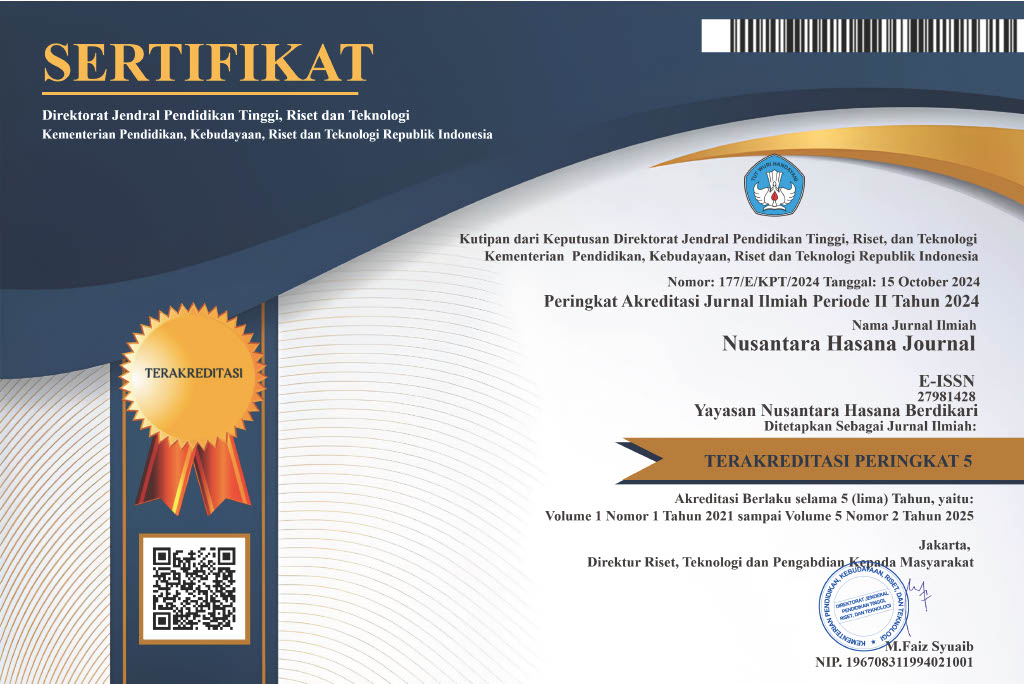A COMPARATIVE STUDY BETWEEN READING ALOUD AND SILENT READING TOWARDS STUDENTS’ READING COMPREHENSION
DOI:
https://doi.org/10.59003/nhj.v4i12.1420Keywords:
Reading Aloud, Silent Reading, Reading ComprehensionAbstract
In teaching and learning process, many students found difficulties in learning English. One of the difficulties was their lack of reading comprehension. Furthermore, the students have problem in reading comprehension to transfer information from the text and students’ motivation in reading text is still low. In addition the technique that was used by the teacher to teach students was monotonous, that it made students felt bored to join the English lesson. It was supported by the students’ reading score, that 74.42 % of students got < 70 score. For that reason, approaches are important to support success in teaching learning process to improve the students’ reading comprehension. The approaches are reading aloud and silent reading. Based on the opinion, the objective of this research is to find out whether there is a significant difference in students’ reading comprehension between those who are taught through reading aloud and those who are taught through silent reading.
In this research, the researcher used causal comparative study method where there was one step in collecting the data; it was post test. The population of this research was the eighth grade of MTs PEMNU Talangpadang Tanggamus and the sample as chosen by doing cluster random sampling. Two classes were chosen as experimental class and control class. Experimental class was given treatment by using reading aloud and control class was given treatment by using silent reading. The researcher conducted five meetings in each class during the research, including four treatments and one post-test that was given to the students at the last meeting.
The result of this research showing that there is a significant different of students’ reading comprehension between those who are taught through reading aloud and those who are taught through silent reading at the eighth grade of MTs PEMNU Talangpadang Tanggamus. It is proved by the result of statistical calculation using t-test formula. It is obtained that T-observed was 3.55, while the critical value of T-critical at degree of significance 5% and df = 54 was 2.00. Because T-observed is higher than T-critical value, it means the use of reading aloud and silent reading had significant difference in students’ reading comprehension.
Downloads
References
Brown, H Douglas. (1998). Teaching by principles, An interactive Approach to Language Pedagogy. Sanfransisco State Universiy: Longman.
Harmer, Jeremy. (1991). The Practice of English Language Teaching. Singapore: Longman Group UK Limited.
Patel, M. F and Praveen M. Jain. (2008). English Language Teaching. Jaipur: Sunrice.
Day, Richard R and Julian Bamford. (2008). Extensive Reading in the Second Language Classroom. Cambridge Language Education: Longman.
Gene R. Carter. (2003). The Threads of Reading Strategies For Literacy Development. (Virginia USA: Alexandria.
Tarigan. (1985). Membaca Sebagai Suatu Keterampilan Berbahasa. Bandung: Angkasa.
Setiyadi, Bambang.(2006). Metode Penelitian Untuk Pengajaran Bahasa Asing Pendekatan Kuantitatif dan Kualitatif. Yogyakarta: Graha Ilmu.
Downloads
Published
How to Cite
Issue
Section
License
Copyright (c) 2025 Niro Arif SAS

This work is licensed under a Creative Commons Attribution-NonCommercial-ShareAlike 4.0 International License.
NHJ is licensed under a Creative Commons Attribution-NonCommercial-ShareAlike 4.0 International License.
Articles in this journal are Open Access articles published under the Creative Commons CC BY-NC-SA License This license permits use, distribution and reproduction in any medium for non-commercial purposes only, provided the original work and source is properly cited.
Any derivative of the original must be distributed under the same license as the original.
























